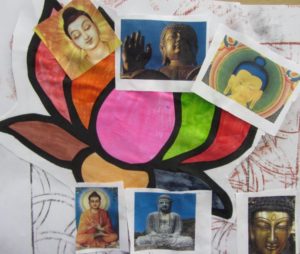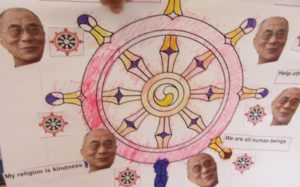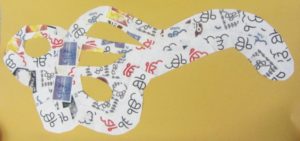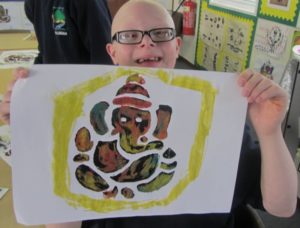Autumn 2012
What does philosophy for children aim to do, and how can this be used with theology to enrich RE learning?
The area of philosophy and theology for children has fascinated me since early in my PGCE. I have always felt that the role of the RE teacher is to encourage deeper thinking and discussion, necessarily involving concepts that reach beyond the scope of some other subjects. How far this could be possible was, however, a complete mystery to me – I had no way of knowing how much I could expect from my own peers who had never studied theology, much less a room full of eleven year olds who had probably never even heard the word before – so upon hearing about ‘P4C’ and other proponents of the area, I was immediately interested. What I was keen to find out through the course of the investigation for this paper is threefold – What do P4C and other scholars say about the movement’s aims? Are there any limitations and how do they affect application? And, most importantly, how can it enrich RE learning? Using the sources discussed throughout, as well as my own observations, I hope to answer these questions and, in the process, gain something that can help to further my teaching and provide a better learning experience for our pupils.
Two key terms common throughout this study will be ‘P4C’ and ‘CoPI’. These, though related, are distinct and separate terms often used when discussing the formal teaching of philosophy to pupils. P4C is the name commonly used for the Philosophy For Children movement founded by Matthew Lipman in the 1960’s which developed the CoPI ideal. A CoPI is a ‘community of philosophical inquiry’ – another name for the group of students and the situation in which philosophical ideas are being discussed. It is not just about the group, but about the environment of the session and the content of it.
What is philosophy for young people?
There are two main contributors to the philosophy in classrooms movement – Matthew Lipman and Catherine McCall. Both approach the idea in similar ways through use of a CoPI, but where Lipman is considered to be a founder of the theoretical system, McCall provides thoroughly comprehensive material and evidence for its practical implementation in schools.
When Matthew Lipman first founded the ‘P4C’ way of thinking, he did it because at the time (1960s) he felt that young people “lacked the necessary skills to construct sound arguments to fight for what they thought was right” (Hannam & Echeverria, 2009: 5). This is the primary aim of the children’s philosophy movement – to equip children and young adults with the skills and experience that will help them to put forward a sound argument. Lipman’s idea to combat this was to develop a CoPI which is basically a space for a group of young people to share ideas which aids in practicing and developing critical thinking by exploring a question at a very deep level (Hannam & Echeverria, 2009: 6,7). The idea of CoPI is very similar to my own experiences of philosophy as an undergraduate – most students’ formative ideas about the nature of philosophy and theology are created and espoused within a seminar-type structure, where they have almost free reign to develop ideas throughout an extended conversation guided by a lecturer or seminar leader.
Catherine McCall’s use of CoPI develops these rather mature concepts to lead a similar kind of discussion with children as young as five. Given a topic and some leading questions, the children are invited to share their growing ideas, and these discussions are given shape (and a semblance of order) by the teacher who ‘chairs’ the meeting. While one aim is to equip children with these skills, McCall also writes that “to be proficient in any activity or skill, one needs to be exposed to the activity and to practise it”(McCall, 2009: 1-2). Philosophy does not stop after the first lesson, but extends itself and continues to provide students with not just the bare skills, but with proficiency in them. This is the difference between teaching a child to ride a bike so they can wobble a few metres, and teaching them continuously until they can go unaided for miles. This is such a profound part of the P4C idea that it acts almost as a separate aim in itself. The eventual end-point of this continued teaching of philosophy is, for McCall at least, to ‘transform’ the participants and to go beyond just teaching skills into the realm where the children themselves are changed (McCall, 2009: 175). This is not just for the good of the students themselves, but can produce individuals who directly benefit society as “to be an active and effective citizen requires both the disposition to reason and the skills required for effective reasoning” (McCall, 2009: 177) – a goal shared by Hannam and Echeverria who write that CoPI can help students to “understand better who they are in the world in relation to others and can begin to handle the stresses of living in a globalized world [by]… taking responsibility for its well-being” (Hannam & Echeverria, 2009). These are goals for CoPI that are logical but lofty.
Resources for Philosophy – how can it be implemented?
When considering the area of children’s philosophy, the first book to discuss here is Catherine McCall’s 2009 book, Transforming Thinking, especially useful in this instance because of its focus on practice as well as theory. From the very beginning, McCall sets out to show the reader that philosophical thinking and problem-solving is something that even a child of five can do, sometimes even better than a university student. Starting to explain this, McCall first explores the Piagetian theories of the development of children’s cognitive capabilities – mainly, that children are not capable of logical, abstract thought until the age of 11 – and soon comes to the conclusion that these are not necessarily correct, and that while there may be empirical evidence to support Piaget, McCall contests that this is not down to the limited capabilities of children, but the fact that they have never been taught to work this way. This concept will be explored in much more detail in the main body of this investigation, but it will do for now to mention that McCall’s work with children and philosophy has found that they can transcend the set stages of Piaget’s theories. By accusing Piaget of under-estimating the abilities of young children to think logically, McCall can then move on from these pre-existing constraints to put forward her theories and examples of child-friendly philosophy.
As mentioned before, McCall does not only deal with theory, but also guides the reader as to how one should put into practice the method of CoPI with children. In Chapter 7 she includes lists of topics that the teacher ‘chairing’ the discussion should know, as well as guidelines in Chapter 8 for how to direct the conversation to illuminate and expand upon basic points raised by the pupils. Alongside this, there are transcripts of real conversations in these CoPI sessions that McCall herself has carried out – a valuable resource for teachers starting to use these techniques and evidence of her assertions that children can be taught to think logically and abstractly from a very young age. These are real lessons, with real students, and even detail times when behaviour management was required, demonstrating to the novice CoPI chair that it’s nothing to be concerned about if the pupils don’t listen and conform straight away.
The theories that McCall champions are, however, not entirely new. As mentioned, the Philosophy for Children movement (or P4C) was first conceptualised in the sixties, and has now expanded to be fairly common in both secondary and primary schools. As a result of a P4C workshop in the early eighties, the International Council for Philosophical Inquiry was formed, an organisation for which McCall is on the advisory committee (P4C 2008-10; McCall, 2009). This relatively long-standing history behind McCall’s work locates it within a comprehensive and well-researched school of education methodology that has proven itself to be effective and worth pursuing. P4C claim three certain effects from their methods, and while increased cognitive ability is certainly a reason to use it, the other two are rather more directly pertinent to RE: “Developments in critical reasoning skills and dialogue in the classroom” and “Emotional and social developments” (P4C 2008-10). The latter developmental claim would, in the best case, enable students to connect with more mature levels of discussion about sensitive issues, whether it be ethical tangles or simply respecting and encouraging the sharing of others’ beliefs. The other claim would, one hopes, increase a student’s ability to grapple with complex ideas such as arguments for and against the existence of God, and being more able to articulate these ideas in the classroom and on paper. These are vastly important skills for deeper learning and understanding in RE, and one would hope that the application of P4C would help to develop them.
McCall isn’t the only P4C devotee writing practical and theoretical guides to classroom philosophy – Hannam and Echeverria’s Philosophy With Teenagers, published last year, is another book that aims to show how easy and fulfilling it is to incorporate CoPI into the classroom. While Transforming Thinking outlines scenarios and gives examples to aid the teacher in implementing CoPI, Philosophy With Teenagers is far more theory driven, concentrating on the aims and concepts with only a few pages on the structure of a session. The same ideas are present here – the goals of Hannam and Echeverria’s CoPI are to develop teenagers, including various ideas of identity (ideological, interpersonal and others) and higher order thinking. This is very similar to McCall, but what really sets Hannam and Echeverria apart is their focus on curriculum reform, set apart from dedicated CoPI sessions. Five chapters include ideas on how the curriculum needs CoPI ideals, how these can be implemented in various subjects and how this will lead to a generation of more well-rounded young people who can “develop hypothetical reasoning and envisage consequences of their actions without the need to engage in practical experimentation” (Hannam & Echeverria, 2009: 72). Philosophy With Teenagers finds opportunities for CoPI everywhere in the curriculum, even in unlikely subjects like D&T, trying to demonstrate the flexibility of philosophical enquiry. However, I feel that this seems to be stretching P4C rather too thinly, and by lauding it so copiously may even serve to damage it in a ‘too good to be true’ type of scenario.
While Hannam and Echeverria are writing on a well-established educational method, their book does not go uncriticised, and the criticisms levelled by Richard Davies in his 2009 paper for the British Educational Research Association annual conference may just as well apply to parts of McCall’s work, and maybe even the roots of the P4C movement itself. One problem (another will be discussed later) that Davies has is that, as he sees it, Hannam and Echeverria’s long-term ideals for CoPI require there to be a large number of students educated in this way. He feels that students leaving a school which advocated CoPI would quickly disperse throughout society, meaning that a “population of young people skilled in critical thinking in this way would find it difficult to meet up with like-minded individual in the course of their day-to-day living. This is one requirement for an educated public” (Davies, 2009: 3). This is one of a small number of legitimate arguments, although I would just add that Hannam and Echeverria’s ideals are just that – ideals. The generalised goals for their CoPI implementation work on the assumption of wide adoption precisely because, in their ideal educational world, that is exactly what would happen.
Nevertheless, Davies does touch on a concern – is there a point to CoPI and its aims if there are never enough people educated in this way?
Theology for Children – Further Resources
While it’s all very well examining the field of children’s philosophy in general, what is really important for us as RE practitioners is how it can be applied to our subject, and that means looking at the linked discipline of theology. The concepts are largely similar as far as implementation goes, although theology with children obviously requires careful selection of topics and questions. The following is a selection of the resources available to us, along with an explanation of how they approach theology and some critical analysis of the content that compares it with previously mentioned literature.
There are a number of resources available for this, and the ones I am specifically looking at here are from RE Today – a well-known and widely-used source for RE teachers. While RE Today is published by Christian Education Publications, their conception of RE is pluralistic, there is no hint of evangelising or proselytising within the resources, and there is a good amount of material on other faiths. One resource book, Philosophical RE (Blaylock, 2008), openly uses the principles of P4C in an RE context. This is mainly through the use of prompts for discussion, whether for groups or for individual students to think out for themselves. Blaylock draws links between P4C and RE by focussing on the presence of ‘big questions’ as part of religion, and of the need to equip students with the ability to keep asking ‘why’, and to explain deeper meanings in religion.
Following this, Questions: Beliefs and Teachings (Blaylock & Pett, 2009) also deals with the questions that religion throws up, but these differ from the ones in the previous book. Here, the questions are less centred around the meaning of life and the nature of goodness and instead focus on the individual, asking things like “what are my beliefs?” and “what impact do they have?”. While not named as an explicitly philosophical approach, this takes the nature of philosophical questioning and turns it back on the students, making them “responsible for the beliefs they hold” (Blaylock & Pett 2009: 23). It is this level of enquiry that philosophy aims to encourage throughout every aspect of education, and these resources certainly do that. As well as an interview included in the Questions resource books, Trevor Cooling has also written a great deal on the Stapleford Project and ‘concept cracking’. While these are not labelled as philosophy either, I believe that a definite case for inclusion can be made.
Cooling’s ‘concept cracking’ is the essence of CoPI distilled for RE. Breaking down complicated theological themes into topics that are open for discussion and connected to the students’ current experiences brings the discursive nature of philosophical theology into the RE classroom, using it to assist students in the exploration of religion at a potentially high level. In Questions: Beliefs and Teachings an interview with Cooling quotes him as saying “Students need to be responsible for the beliefs they hold, because they are so important in shaping their attitude and behaviour” (Blaylock & Pett, 2009: 23). While the previous assertion of perhaps too-structured an approach may be partially true – flexibility can be essential in the classroom – it still holds that concept cracking is a key element of encouraging responsibility. It allows students access to, and discussion of, more complicated ideas that in turn allow them to take more responsibility for their own convictions. If McCall wants to achieve a ‘transformation’ in students, she could do worse than implementing CoPI-based concept cracking in an RE setting.
Cooling notes that the Stapleford Project’s aim is to devote more attention to “exploring the theological concepts” that are the source of meaning and the absolute certainty that children are able to “handle abstract religious ideas,” (Cooling, 2000:153) both of which fit neatly within the overall aims for a philosophical approach. More than this, Cooling helps us to begin to link philosophy for students with theology for students, giving ideas on how to ‘crack’ the more complicated religious concepts to enable pupils to get to grips with areas of theology that aid overall understanding of a religion. His article in Pedagogies of Religious Education is more than the handbooks from McCall, Hannam and Echeverria – it advocates using and breaking down these concepts as an educational approach and pedagogy in itself. This goes far further than the others’ suggestions that philosophy is merely ‘useful’, and instead argues that it is an absolutely valid (and almost essential) method for engaging students with theological concepts and the deeper meanings of religion.
In this regard, Cooling is not the only advocate of a philosophically-linked theological approach – Gerhard Büttner’s article for the BJRE (2007), “How Theologizing With Children Can Work” also deals with the ‘big questions’ of philosophy, but seeks to locate them within a religious context, thereby dealing with complex theological issues outside of prescriptive dogma. Here, it is his turn to chronicle anecdotes from himself and his acquaintances that document the ability of small children to extend their thinking beyond the here-and-now, to deal with more fundamental questions of how things originate and where this might be located within religious narrative. Sharing some similarities with McCall’s text, conversations with children as young as 4 years old are presented to demonstrate the range of logic and reason that even this age-range is capable of. The difference here is that, whether directly or in-directly, these enquiries are all connected to ideas of God and religion, with examples such as a little girl wondering why Jesus is still on the church crucifix on Easter Sunday and a philosopher’s daughter pondering the nature of causality and infinity.
By extending the ideals of philosophical thinking into religious enquiry, Büttner provides a similar, but alternative, method of ‘doing theology’ to Cooling – both rely on relating the experiences and enquiries of children to the religious concept at hand, but the latter requires a structured, analytical approach, whereas Büttner is more concerned about opening up a child’s natural enquiry and then finding within it a theological approach. For me, both are equally valid and both may prove to be useful in different settings. In criticisms of the concept cracking method, Cooling mentions that the step-by-step nature of the approach may indeed be too rigid, and that perhaps it would be more useful to see it as an inspiration for teaching (Cooling, 2000:165). The reverse of this may also prove to be a criticism of Büttner – it may well be that there is not enough ‘method’ in his theories of children as natural theologians to provide a good result often enough. If a child needs prompting, it would probably be more suitable to use Cooling’s formulaic approach.
Theory in General Practice
There is a wealth of material that covers, advocates and begins to criticise philosophy in the classroom – this is just a snapshot, but it is a relevant one. From the history of P4C we can understand the roots of the methods that are espoused by the authors of the practical guides, and Cooling’s pedagogy enables us to apply these rigorously within our subject. The more openly philosophical approaches of Büttner and the RE Today materials also demonstrate the range of possibilities we have to tackle the implementation of questioning and discussion within RE whilst still keeping on track and providing a comprehensive and effective education. What is still up for discussion is how these work outside the edited and necessarily exaggerated realm of practice books, in the real classroom with children who may never have encountered this approach before.
While on my PGCE I had the opportunity to observe some year 7 ‘Thinking Skills’ lessons (the particular interpretation of P4C/CoPI used by my training school). During these sessions I was able to observe these aims in practice and see how they affect the youngest students in the secondary system. While there is no set programme of study, every lesson is designed to get the students thinking for themselves, getting to the root of our reasons for thoughts and actions. One striking lesson had the students engaged in a competition to build the highest tower from plastic cups, but with the actual winners being those who showed the greatest teamwork skills. This was thought-provoking for the students, some of whom came face-to-face with the nature of how they really behave in a group situation. Other lessons have included the nature of words and how we can understand the nature of words and their origins. While these are not strictly the things that a CoPI is necessarily designed for, the skills that the students are learning are the same – each lesson has an objective that requires the students to engage with concepts on a deeper level than just surface meaning or intention. These are the building blocks for philosophy, easily applicable to any subject or situation, and correlate well with Lipman’s ideals. More importantly, it has helped me to see that these really are reasonable aims – both the introduction and continued practice of skills are present and achievable. Use of these skills throughout various subjects would not only help to address the implementation of continued practice, but would also aid pupils in seeing the wide range of applications for deeper thinking. However, within this school only year 7 had any timetabled space for the sessions and I have yet to work at another school that includes it officially on any programme of study.
What limitations are there on philosophy with children?
Davies, in particular relation to Philosophy With Teenagers, is concerned that there is a lack of a clear and instructive linking between the mind-based ideals and the actions of teenagers who have been instructed in critical thinking (Davies, 2009). His issue is that the idea of theoretical knowledge informing practical wisdom is “simply not realistic” (Davies, 2009: 3). However, I do not believe that this is an entirely valid limitation on CoPI, if it is valid at all. The way CoPI is used, at least in terms of the thinking skills I have observed, is not a case of teaching theoretical skills for practical application, but is a way of engaging students to think more deeply about abstract ideas to lead to better understanding of the world. This may be a more applied form of knowledge, but it is still lodged firmly in the theoretical and Davies point can no longer stand if there is no theory/practice gap to traverse.
There are other limitations that are of much more concern. McCall’s handbook for CoPI implementation starts with a transcribed conversation of what seems to be a deep and mature philosophical discussion amongst a group of people. It is then revealed that these are actually 5 year olds. This is all very much in line with the aims of P4C. However, McCall mentions in the notes appendix that the particular class of 5 year olds she was working with had needed CoPI sessions every day for a month before they could begin to follow the reasoning structure required for discussion. This is one of the main limitations of CoPI ideals – as mentioned briefly in the previous section, there are often time restrictions that prevent the inclusion of a dedicated CoPI lesson past the first one or two years of secondary school. There may be many good things to come out of continued CoPI applications, but lesson time is in short supply at most schools and it may be the case that there isn’t even spare time in any subject to include philosophical style thinking. In a lot of schools many lessons are missed due to the structure of the timetable and calendar, so in a lot of cases there is no time to do anything but teach concepts and exam technique even for those members of staff who hold thinking skills activities in high regard.
This problem highlights how even the noblest aims to include CoPI ideals can fall at the feet of logistics and day-to-day life. Because of this time issue, the limitations placed on McCall’s aims and achievements are rather large and, therefore, rather damaging to the practicality of CoPI inclusion in schools. The idea that philosophising with children can have such dramatically good effects upon them as members of society cannot be upheld because the likelihood is that most pupils who have the opportunity to even sample CoPI will not experience it often enough for these sociological benefits to come to fruition. While I am by no means suggesting that there is no civil benefit to CoPI, P4C or other philosophy movements, it strikes me that it is very improbable that the extent of McCall’s claims can ever be reached, purely because of time restrictions. However, it also strikes me that even if full potential is not reached (or perhaps not even approached), these lessons can still have some merit – it is not a skill set that is only valuable when completed.
Specialising in RE
RE is, by its very nature, the kind of subject that tackles the ‘deep’ questions that are perfect for a philosophical approach, whether by class discussion or exercises for the individual. More than this, philosophy itself is perfect for RE, as the subject lends itself to a questioning and philosophical approach. In a world where many international conflicts have a religious dimension we would not be serving our teenagers well if they did not leave school well informed about religious matters (Hannam & Echeverria, 2009: 110). This idea correlates perfectly with Lipman’s original desires – by providing young people with access to certain skills and the opportunity to practice them in a safe environment, we help them to argue for their beliefs and to stick up for themselves. In terms of RE specifically, religion is a trigger for debate almost everywhere. We can inform students of facts and details concerning major belief systems, and also give them the skills to discuss these respectfully, deeply and with genuine engagement. This leads not only to self-assurance and the ability to cohesively stick to their beliefs, but also helps them to understand the nature of someone else’s. What we must consider, however, is how possible this is and whether it adds a great deal to the learning of RE. After reading the sources cited in the literature review, I would say that the answer to these considerations is an unequivocal “absolutely,” for the following reasons:
‘Theologizing’ with children
While resources and pedagogies go a long way to cementing the role of CoPI in RE, Büttner’s article demonstrates a critical piece of evidence. The ability of young children to grapple successfully with questions of God documented by Büttner is striking; it presents us with evidence that even pupils half a decade younger than secondary students have the ability to understand the enormity and physical impossibilities of religious concepts. While, as mentioned previously, he may not be methodical enough to be used as a teaching tool, Büttner demonstrates that there is almost an innate ability to deal with these ideals, and that we must just tease them out of students and get to the underlying core of what a seemingly non-theological conversation might actual hold. This cannot be done without discussion or without contemplation of conversation, making the need for application of CoPI in the area undeniable.
Applications in RE Practice
I have been heavily influenced by the whole idea of philosophy and theology in the RE classroom, and as such I have used it extensively in my first year as a ‘proper’ teacher. I would consider the role of discursive inquiry to be of the utmost importance when teaching a subject so socially-orientated, yet deeply personal, as RE. While there may not always be time and the topic may not always be appropriate, I include these principles in the majority of lessons, to aid my students to develop as critical thinkers who can engage deeply enough with concepts of religion to truly understand it and make confident decisions about their own spirituality. I have integrated some elements into our departmental schemes of work, by discussing the reality of miracles, the humanity of zombies and the links between religions. The response was brilliant – I was genuinely surprised by how thoughtful the students’ answers and, more importantly, the reasons behind their answers were. The experiences I have had with this approach have done much to persuade me of the validity of the CoPI, and have demonstrated to me that young secondary students are very much capable of high level thinking.
Specialist RE Resources
Simply put, CoPI themes are abundant in RE resources, to the point where there is even a resource book named Philosophical RE that is filled with questions, discussion points and methods to shape and connect lessons using personal experience. Unsurprisingly, Questions: Beliefs and Teachings is similarly packed with ideas for getting to the core of religious belief. These resources not only firmly establish the place of philosophical and theological discussion in the RE classroom, but also serve as a conviction that our students are more than capable of grappling with these methods and concepts in a mature and progressive way
Conclusion
For me, the final word on application and on the inclusion and effectiveness of philosophy and theology in RE lies with Davies. For him, theology “holds on to the power of ideals, of the need for action, of the canonical texts and opportunities to meet together, and yet in combination with philosophy recognises the need for corporate action beyond one’s comprehensive doctrine and action permissible within public space” (Davies, 2009: 5). If we acknowledge, as I believe we must, that the goals of RE teaching are at least generally concordant with the ideals of Lipman and other CoPI advocats, then Davies’ vision of theology is one we must aspire to include. I have heard students less than half my age giving theologically-based answers that I would have been pleased to put forward myself. By giving young people a chance to think deeply about questions of spirituality and faith, and including philosophical discussion, then we give them the opportunity to take responsibility for their faith, their identity and their ideas, and of their place in the world that they can have a part in influencing as confident and critically-minded individuals.
Reference list
Blaylock, L. (ed) (2008) Philosophical RE, Birmingham: Christian Education Publications
Blaylock, L. & Pett, S. (eds) (2009) Questions: Beliefs and Teachings, Birmingham: Christian Educations Publications
Büttner, G. (2007) ‘How Theologizing With Children Can Work’, British Journal of Religious Education, 29 (2), 127-139
Cooling, T. (2000) ‘The Stapleford Project: Theology as the Basis For Religious Education’ in M Grimmitt (ed) Pedagogies of Religious Education, UK: McCrimmons
Davies, R. (2009) ‘What’s in a word: philosophy, theology and thinking? A critical review of Hannam and Echeverria (2009)’ presented to the British Educational Research Association annual conference, Manchester, 2nd-5th September
Hannam, P. & Echeverria, E. (2009), Philosophy with Teenagers: Nurturing a Moral Imagination for the 21st Century, London: Continuum
McCall, C. C. (2009) Transforming Thinking: Philosophical Inquiry in the Primary and Secondary Classroom, London: Routledge
P4C 2008-10, History of P4C, P4C, viewed November 4th 2010





